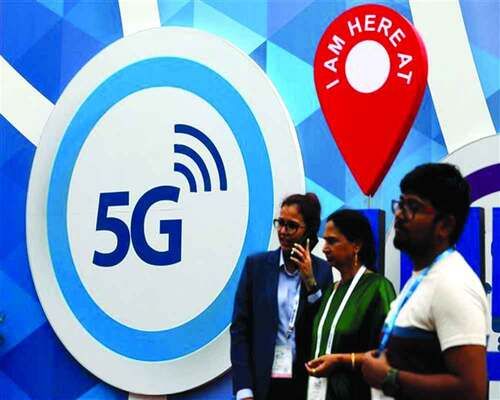5G Spectrum Auction Battle Begins (Commercial 5G Rollout by October)
-

In what could be straight out of a ‘Stranger Things’ episode, an unusual red glow over the Atlantic Ocean set cyberspace abuzz. The game of 5G have begun.
Game of (5G) Thrones:
The 5G spectrum auctions have begun and bids have been pouring in. Although bids have already come in for a bulk of the critical airwaves, the tussle for spectrum continues. Dial in for more.
But first, what is spectrum? Spectrum refers to the invisible radio frequencies that wireless signals travel over. These signals are what enable us to make calls and transmit data. The spectrum auction is a process used by the government to sell the rights to use the frequency to transmit signals.
The government has put up 72Ghz of spectrum for auction at a base price of ₹4.3 lakh crore. Telecom companies have bid a record ₹1.45 lakh crore for this spectrum on Day 1 itself!
Reliance Industries’ telecom arm Jio is reportedly the front runner, and is expected to spend over ₹70,000 crore during the auction. Meanwhile, Bharti Airtel is expected to spend ₹45,000-50,000 crore.
If reports are to be believed the bids were placed at the base price, due to the abundance of spectrum.
But when would you, the aam aadmi (the common man), be able to use 5G on your device? According to the telecom minister, the allocation of spectrum will be completed in August, and 5G is likely to be available in major cities by the year-end.
ICYDK, the 5G technology is up to 10x faster than 4G and is also expected to be 10-15% costlier.
-
5G splurge to lay debt trap for telcos?
The highly anticipated 5G spectrum auction was finally concluded this week. India’s leading telecom companies bid for 51 GHz of 5G airwaves and spent ₹1.5 lakh crore, higher than the government’s estimate of ₹1.1 lakh crore.
There is excitement within the telecom industry and among consumers around the launch of 5G services. However, market experts believe that the higher-than-expected spectrum spends could push the telecom industry’s overall debt to more than ₹6 lakh crore, from ₹4.7 lakh crore at present.
Moreover, setting up 5G network infrastructure like laying of fibre-optic cable could put additional burden on telecom operators.
In the past, telcos with unsustainable debt levels like Aircel and Anil Ambani owned-Reliance Communications were forced to go out of business. Further, competition within the telecom industry has substantially increased after the entry of Reliance Jio.
The net debt of Bharti Airtel and Vodafone Idea stood at ₹1.96 lakh crore and ₹1.6 lakh crore, respectively, in the quarter ended March 2022. Meanwhile, Reliance Jio’s net debt was at ₹57,700 in the June quarter FY23. Market experts believe that the strong balance sheets of Reliance Jio and Airtel could act as a shield against high debt.
However, Vodafone Idea’s elevated auction spending could raise its leverage beyond the comfort zone. This could hinder its ability to compete against rivals on the 5G turf.
Nevertheless, telcos are all set to roll out 5G services, with some expected to launch them in the last quarter of 2022. Consumers having 5G-enabled devices will be the first to experience the 5G speeds. However, wide-scale adoption will depend on 5G handset penetration, which stands at just 15% at present.